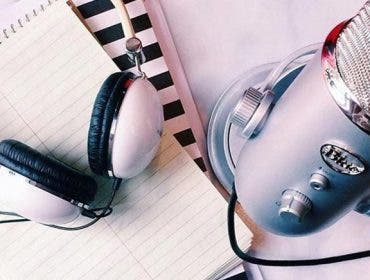High contrast scenes are one of the most difficult photographic challenges every photographer will have to face. Our eyes are much more sensitive and can see better in high contrast scenes than almost any sensor currently being produced. However, as digital cameras get better with time, the dynamic range on even lower-priced cameras is getting wider and will likely one day even surpass our eyesight.
The image below which was shot at sunset is a good example of a high contrast scene. The sun was very bright in the image and the foreground was very dark. I used the high dynamic range method below to get the resulting image, which matches what I saw with my eyes more closely.
1. Expose to the right
You may also see this mentioned as ETTR. Exposing to the right is the practice of making sure the brightest part of the image bumps up against the far right hand side of the histogram without any part of it going beyond the end. This ensures the greatest amount of data throughout the image without anything being overexposed. This often requires post production to process the image so that the tones in the image are correct. This method of exposing works well when the dynamic range of the image isn’t very extreme.
2. Multiple exposures for HDR photos
The term HDR can make some people cringe, but when used correctly it can make for a pleasant picture that effectively blends the details from the black and shadows as well as the midtones and the highlights. In this popular method of exposure control, you take three or more images at various exposures. The best way to do this is to have a tripod and either a shutter release or use your camera’s timer function. Most modern cameras have a feature called bracketing (it may be called something different depending on your manufacturer) where the camera will take a number of images that you determine, at exposure differences you set. The camera then takes the pictures in rapid succession, varying the shutter speed while keeping the ISO and aperture constant.
You will now have three or more images. One will be the middle value, one will be brighter to better expose the darker part of the image and one will be darker to get the details from the highlights. You can then use a photo editor such as Photoshop or Photomatix to combine the images into one HDR photo. The below examples are the three images that make up the top HDR photo.
This method works well with landscapes that don’t have much movement. If you have a tree or flowers in your shot and it is windy, the software may struggle to align the images.
Middle Value
Exposing for Sun and Sky
Exposing for the Shadows and dark parts of the image
3. Fill flash
When you have a subject that needs an extra bit of light to balance out against a bright background, careful use of a fill flash can help brighten your subject. Just be careful not to have your subject overpower the image. Flashes are also very harsh and can cast very pronounced shadows. It is usually best to diffuse the light with a flash diffuser.
4. Reflectors
Using a reflector can have a similar effect as a flash though it can be hard to use in the field if you don’t have anyone helping you. There are many great reflectors that come with multiple options for bouncing and diffusing light. I have used the model below on film shoots and it works great when you need that extra little bit of light.
Westcott 20-inch 5-in-1 Reflector
5. Use a graduated ND filter
Graduated ND is a filter that uses a clear section to maintain the darker part of the image at the correct exposure and a darkened section to lower the intensity of the brighter part of the image so that there is a more balanced dynamic range being fed to the camera. This is great for getting the same effect as the HDR, but in camera. The benefit of this filter is you don’t have to worry about aligning multiple images. The down side is that it doesn’t give you the fine tune control that you get from three separate images and if you have anything that crosses over from the clear to the darker part of the filter it will have two different exposures.





